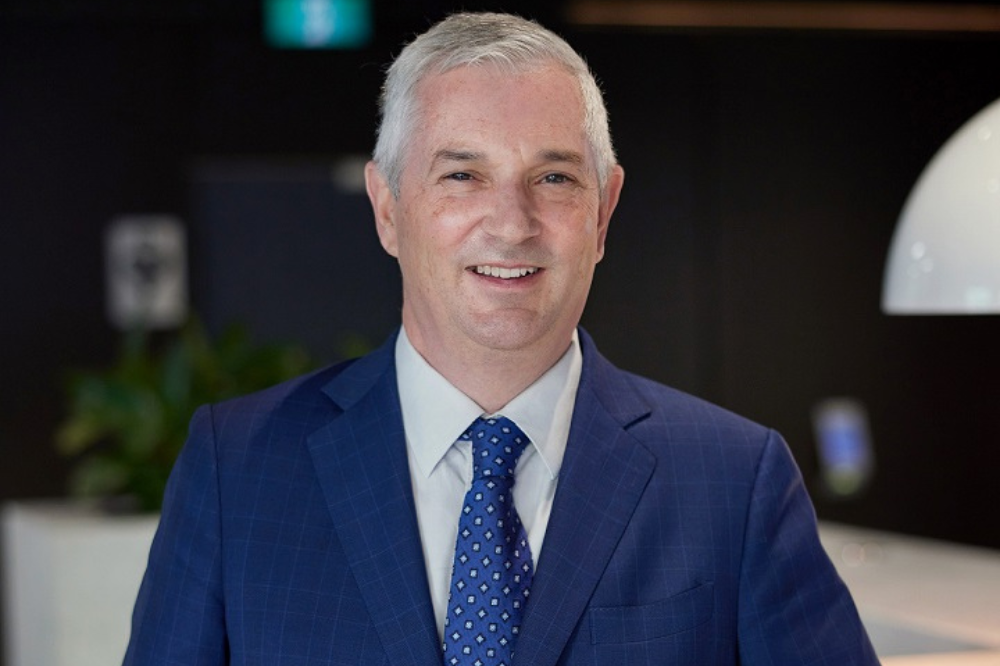
With more than twenty years' leadership experience spanning several prominent industries, Graham Catt was the natural choice for CEO of Independent Schools Australia when he was appointed to the role in February this year.
Well-known for his expertise in government relations, Catt’s transformative leadership at the Canberra Business Chamber during the COVID-19 pandemic cemented his reputation for strategic advocacy and rapid adaptation, and this is a reputation that counts as the Independent sector confronts some big challenges in 2023.
Like its counterparts in the Government and Catholic sectors, independent schools are currently navigating sweeping education reforms, a worsening youth mental health crisis, burgeoning staff workloads, the national teacher shortage, and the rise of Artificial Intelligence.
While these challenges are no doubt daunting, Catt's experience positions him uniquely to steer the Independent school sector towards a promising future.
Indeed, Catt is optimistic about the sector’s ability to help staff and students thrive, both now and in the years ahead.
“The Independent school sector serves some of the most disadvantaged students, families, and communities in the country, so it has been particularly exciting for the ISA team to contribute to increasing awareness, media coverage and public discussion about the role of Independent Special Assistance Schools,” Catt told The Educator.
The Special Assistance Schools Showcase Report, released early this year, highlights the innovative programs and specialised expertise that have been helping high school students who have become disengaged from schooling.
“Each of the 95 SAS schools is unique, and the report highlights some outstanding case studies of how these remarkable schools and dedicated educators are re-engaging young people in education,” Catt said.
“The report highlights some inspiring stories and innovative programs that may be useful models for schools everywhere.”
One of the case study schools – Galilee School, located in Canberra – provides its students ‘wrap-around care’, with a teacher to student ratio of 1:5 that provides high-level, individual support. The school also offers seven youth workers, a chaplain, and therapy dog, Halle.
A volunteer from Rainbow Paws animal rescue visits the school twice a week with reading dogs to improve literacy levels and wellbeing for reluctant readers. This program allows students to sit quietly with one of their dogs that patiently listens to students reading.
Some students leave at the end of Year 10 to go into employment and may return to complete years 11 and 12. To keep this option open, students can return up to the age of 25.
Sector expects strong growth well into 2024
The independent sector has been Australia’s fastest growing for more than a decade, with ABS data showing that total school enrolments increasing by 0.3% to 4,042,512 students across 9,614 schools last year.
Catt said these numbers are continuing to grow strongly.
“Our research consistently shows that parents want more from education than strong academic results. They choose an independent school because it aligns with their values and beliefs, and they believe their child can thrive there,” Catt said.
“The diversity across 1,209 schools in the Independent sector provides choice for parents. With a median fee of around $5300 in 2023, more families are able to find an option that also aligns with their budget.”
Catt noted that during the COVID-19 lockdowns and restrictions, many Independent schools demonstrated an ability to quickly make decisions and adapt to challenges.
“That is also valued by many families.”
Keeping abreast of change
When asked about how the sector is collaborating to drive improved teaching and learning outcomes, Catt noted that Independent schools often partner with other schools, universities, or organisations and invest in new and transformative programs that benefit both students and educators.
“Hillbrook Anglican School is an interesting an example of collaboration that has enabled them to embrace generative Artificial Intelligence,” he said. “The school recognises that the ever-evolving nature of AI needs continuous evaluation and adaptation.”
At the school, teachers and students are taught how to effectively use prompts, establish example banks and share resources, and collaboration between teachers working together in creative and thoughtful ways includes the students themselves.
“The school has also been sharing their practices with other school that are looking at how to incorporate generative AI. I see great value in sharing such knowledge and practices, which can benefit the whole education sector.”
Forging a bright future
Looking ahead, Catt said Independent schools will “continue developing creative, flexible approaches” to address the important issues that will feature in the national reform agenda during 2024.
“Wellbeing of students and staff is a significant issue and Independent schools are developing holistic approaches to ensuring and enhancing the wellbeing of their school communities,” Catt said. “Independent schools will continue to innovate and find practical ways to personalise and differentiate learning according to individual students' needs, interests, and strengths.”
Catt said the sector’s schools will also leverage the benefits that technological developments such as generative AI in education can offer, while ensuring the associated risks are understood and mitigated.
“We’ll see more schools in our sector lead by embracing the opportunities that AI can deliver, and building a body of knowledge and evidence that will be meaningful for all school sectors,” he said.
“Most importantly, we need to all focus on ensuring all Australian children receive the best education we can deliver. Working collaboratively across school sectors and governments is the only way we will find solutions to the challenges we collectively face and improve our education system overall.”


